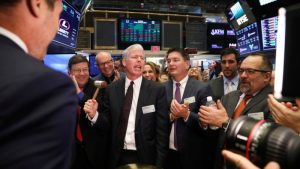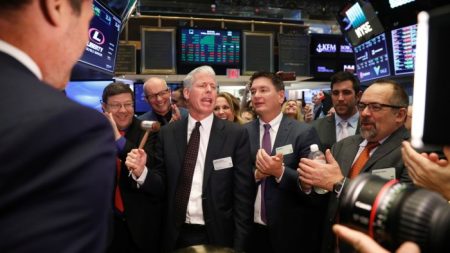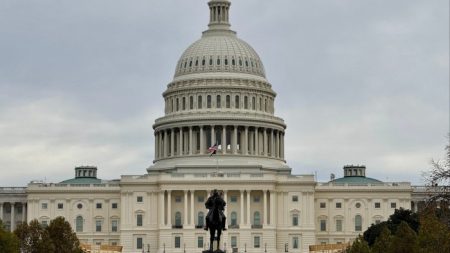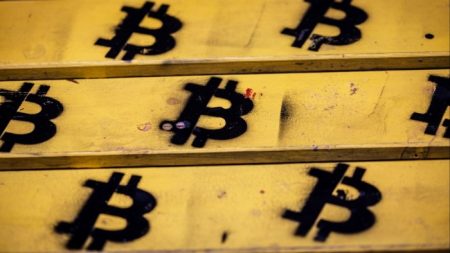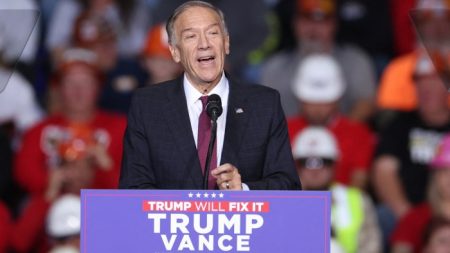Stay informed with free updates
Simply sign up to the US inflation myFT Digest — delivered directly to your inbox.
US inflation fell to 3.3 per cent in May, raising expectations of early interest rate cuts and delivering a boost to the stock market and President Joe Biden.
The data, issued on Wednesday hours before Federal Reserve officials outlined their plans for rate cuts this year, was marginally below economists’ expectations.
The S&P 500 was up 1 per cent in afternoon trading, even after the Fed kept borrowing costs on hold at their 23-year high of 5.25 per cent to 5.5 per cent and the bank’s “dot plot” projected that it would cut rates just once in 2024.
The benchmark index had been up as much as 1.3 per cent in morning trading at a record intraday high of 5,446.28 as investors raised their bets for rate cuts this year.
Ronald Temple, chief market strategist at Lazard, said the figures were “exactly what the Fed needed to increase its confidence that inflation is subsiding and rate cuts are warranted in the months ahead”.
After the Fed decision, traders in the futures market placed the probability of a September rate cut at 75 per cent. The figure had been more than 80 per cent shortly after the release of the inflation data. On Tuesday it was 60 per cent.
“A September rate cut is very much back in play,” Temple said after the release of the CPI data.
Investors were pricing in between one and two quarter-point rate cuts from the Fed this year following the release of the central bank’s forecast.
Biden hailed Wednesday’s data as “welcome progress on lowering inflation”, adding that it was now “nearly two-thirds from its peak”, with core inflation at its lowest level since April 2021.
The 3.3 per cent rise in the headline consumer price index compared with a Reuters survey that expected the rate to remain at 3.4 per cent.
Core CPI, which strips out changes for food and energy prices, hit 3.4 per cent, below expectations of 3.5 per cent.
The Bureau of Labor Statistics data also showed month-on-month headline inflation was zero, while the core figure edged up just 0.2 per cent.
Biden is seeking to convince voters of his economic record in the run-up to the November election.
But the president still lagged his Republican rival Donald Trump in terms of handling the economy in last week’s FT-Michigan Ross poll of voters, although he has narrowed the gap in recent months.
While the Fed’s preferred inflation gauge is the personal consumption expenditures figure, CPI data still has an effect on the central bank’s approach to cutting rates.
The two-year Treasury yield, which moves with interest rate expectations and inversely to its price, was down 0.11 percentage points at 4.73 per cent, but had hit a two-month low of 4.67 per cent during morning trading.
James Knightley, chief international economist at ING, said Wednesday’s data still showed “areas of lingering strength in pricing power”, notably in housing costs and medical care prices. But the report overall, was “good news” in the Fed’s fight to tame inflation.
“This needs to become the trend after a series of far too hot readings at the start of the year. We think it will be, and with unemployment on the rise we expect the Fed to cut rates in September,” Knightley said.
Additional reporting by George Steer
Read the full article here



